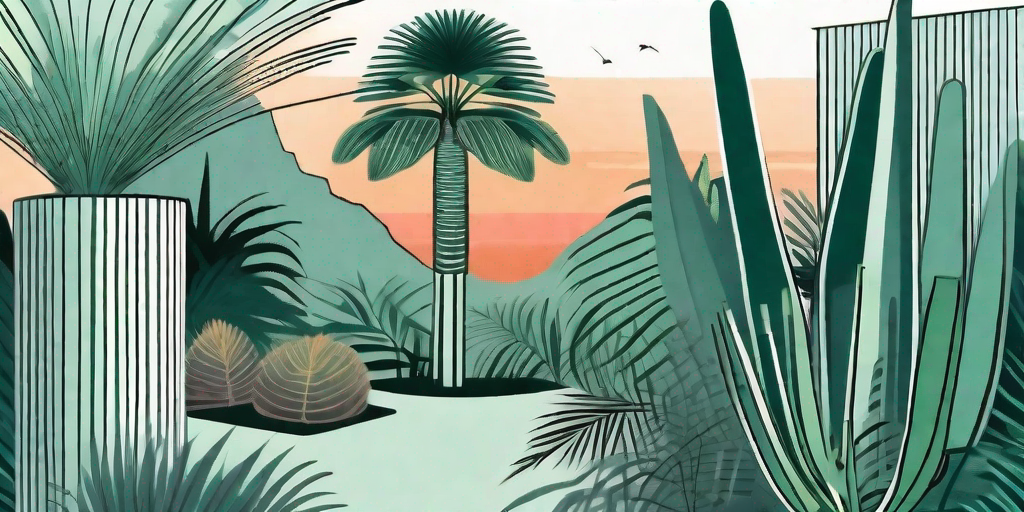
Let's face it, folks. Your garden is probably as modern as a rotary phone. It's time to jazz it up a bit, and what better way than with a plant that's been around since the Jurassic era? That's right, we're talking about the Cycad, a plant so old it probably remembers when dirt was invented.
What is a Cycad?
Before we get into the nitty-gritty of how to turn your garden into a prehistoric paradise, let's first understand what a Cycad is. Cycads are a group of seed plants whose lineage stretches back over 280 million years. They're like the great-great-great-great-great-great-great-grandparents of all plants.
These ancient plants are characterized by their stout and woody trunk, topped with a crown of large, hard and stiff evergreen leaves. They're like the bodybuilders of the plant world, all muscle and no fluff.
The History of Cycads
Now, you might be thinking, "280 million years? That's older than my mother-in-law!" And you'd be right. Cycads have been around since the age of dinosaurs. In fact, they were a major part of the diet of herbivorous dinosaurs. So, if you've ever wanted to live like a dinosaur, eating a Cycad is a good start. (Disclaimer: Please do not eat Cycads. They are toxic to humans and pets.)
Despite their age, Cycads are not fossils. They are living plants that continue to reproduce and thrive in the modern world. They're like the Rolling Stones of the plant world, still rocking after all these years.
How to Grow Cycads
Now that we've established that Cycads are the coolest plants on the block, let's talk about how to grow them. Because let's face it, what's the point of knowing about a cool plant if you can't grow it in your own garden?
First things first, Cycads are not your typical houseplant. They're more like the eccentric uncle of the plant world. They have specific needs and won't tolerate being ignored. But with a little care and attention, you can have a Cycad that's the envy of all your neighbors.
Choosing the Right Cycad
There are over 300 species of Cycads, each with its own unique characteristics. Some are small and compact, perfect for a pot on your patio. Others are large and imposing, ideal for making a statement in your garden. So, the first step in growing a Cycad is choosing the right one for your space and climate.
Some popular choices include the Sago Palm (Cycas revoluta), the Coontie Palm (Zamia pumila), and the Giant Dioon (Dioon spinulosum). Each of these has its own unique charm and can add a touch of prehistoric elegance to your garden.
Planting Your Cycad
Once you've chosen your Cycad, it's time to plant it. Cycads prefer well-drained soil, so make sure your garden or pot has good drainage. They also prefer a sunny spot, but can tolerate partial shade.
When planting your Cycad, dig a hole twice as wide and just as deep as the root ball. Place the plant in the hole, making sure the top of the root ball is level with the soil surface. Backfill the hole with soil, firming it gently around the base of the plant.
Caring for Your Cycad
Now that you've planted your Cycad, it's time to care for it. And let me tell you, Cycads are not low-maintenance plants. They're like the divas of the plant world, demanding constant attention and care. But don't worry, with a little effort, you can keep your Cycad happy and healthy.
Watering
Cycads are drought-tolerant plants, which means they don't need a lot of water. In fact, overwatering is one of the main causes of death in Cycads. So, when it comes to watering, less is more.
Water your Cycad when the top inch of soil is dry. And make sure to water deeply, so the water reaches the roots. But remember, Cycads don't like wet feet, so make sure your plant has good drainage.
Feeding
Like all plants, Cycads need nutrients to grow. But unlike other plants, Cycads are slow growers, which means they don't need a lot of fertilizer. A slow-release fertilizer applied once or twice a year is usually enough.
When feeding your Cycad, make sure to follow the instructions on the fertilizer package. Overfeeding can cause more harm than good.
FAQs
Are Cycads poisonous?
Yes, all parts of the Cycad are poisonous to humans and pets. So, if you have curious kids or pets, it might be best to skip the Cycad.
How fast do Cycads grow?
Cycads are slow growers. In fact, some species only grow a few centimeters a year. But don't worry, your patience will be rewarded with a stunning plant that's sure to turn heads.
Can I grow a Cycad indoors?
Yes, some species of Cycads can be grown indoors. Just make sure to provide them with plenty of light and don't overwater.
Conclusion
So there you have it, folks. Everything you need to know to turn your garden into a prehistoric paradise with Cycads. These ancient plants are sure to add a touch of elegance and intrigue to any garden. So why not give them a try? After all, who wouldn't want a garden that's been 280 million years in the making?
Remember, growing Cycads is not for the faint of heart. But with a little care and attention, you can have a garden that's the talk of the town. So go ahead, take a step back in time and grow a Cycad. Your garden will thank you.















